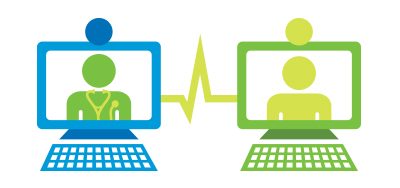 Telehealth will soon be “connecting” healthcare providers and patients electronically, improving patient outcomes and efficiency of care. From routine conversations with a GP to emergency situations — like diagnosing and treating a rural stroke patient; telehealth presents a variety of healthcare opportunities.
Telehealth will soon be “connecting” healthcare providers and patients electronically, improving patient outcomes and efficiency of care. From routine conversations with a GP to emergency situations — like diagnosing and treating a rural stroke patient; telehealth presents a variety of healthcare opportunities.
It is important to distinguish the definitional differences between telehealth and the more specific telemedicine. Telehealth is the broader term of the two, encompassing telemedicine which is defined more often by a care service rendered by a physician to a patient. In common vernacular, the two terms are used interchangeably. Telehealth, as the broadest term, encompasses four categories according to the Center for Connected Health Policy: Mobile Health (mHealth), remote patient monitoring, store-and-forward care and live video. Currently, the bivariate definitions regarding telehealth and telemedicine depend on geography and law. A CIO article highlights the 29 states (and Washington D.C.) who have already mandated commercial reimbursement of telehealth services.
A typical example telemedicine in practice today are telestroke services being employed especially in rural areas. “In its most basic form, a telestroke system requires a neurologist and attending nurse to have a high-speed Internet connection and video conferencing capabilities on a laptop, tablet or desktop computer. The goal is for the consulting neurologist to be able to talk to the patient about what symptoms the patient experienced, evaluate the patient’s motor skills, view a computed tomography (CT) scan, make a diagnosis and prescribe treatment.” Most commonly large healthcare institutions offer telestroke services on a contract basis to smaller and more rural hospital that are unable to staff a vascular neurologist 24/7.
Recently in South Carolina, Governor Nikki Haley signed “The South Carolina Telemedicine Act” that allows doctors to treat patients with the same level of care as they would in person. Like most telestroke programs, this bill is aimed at benefitting rural South Carolinians who do not have adequate traditional methods of medical access. Another state leader in telehealth and one of the first is The Center for Telehealth at the University of Mississippi Medical Center, established in 2003. The “program is serving as the model for a national implementation of the same service” and reaches “62 of Mississippi’s 82 counties.
Finally, the American Medical Association is moving towards creating formal guidelines for telehealth services, giving credibility to its future as a part of the healthcare industry.




